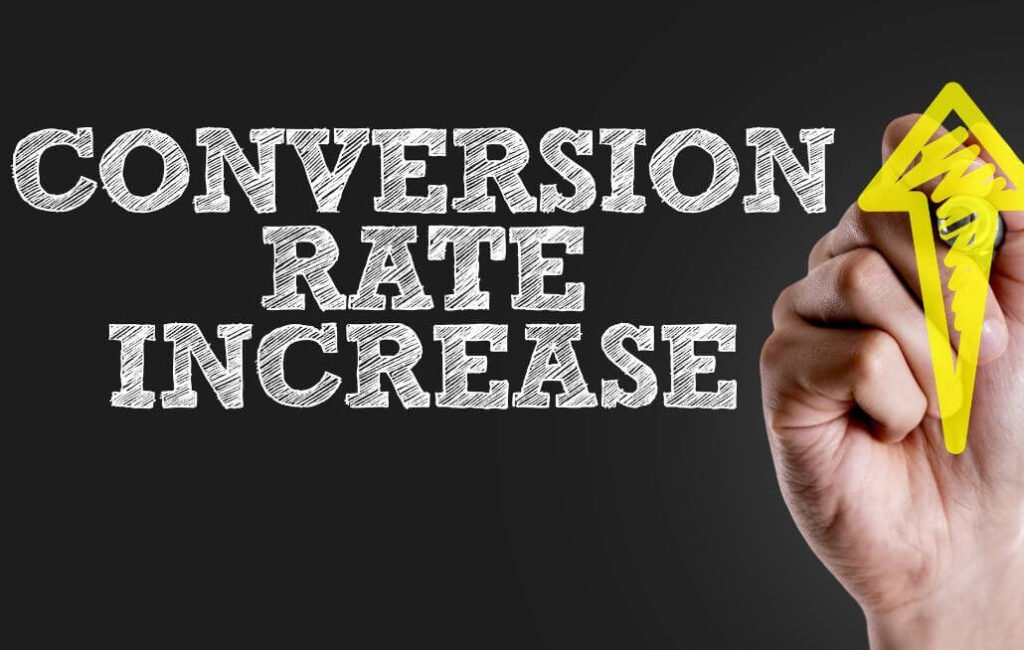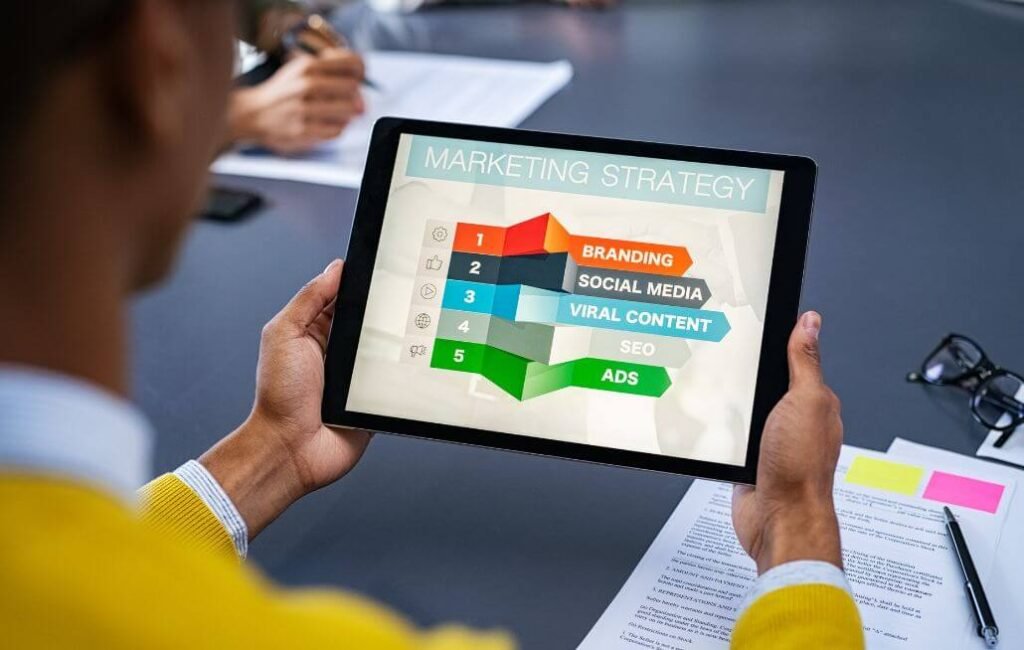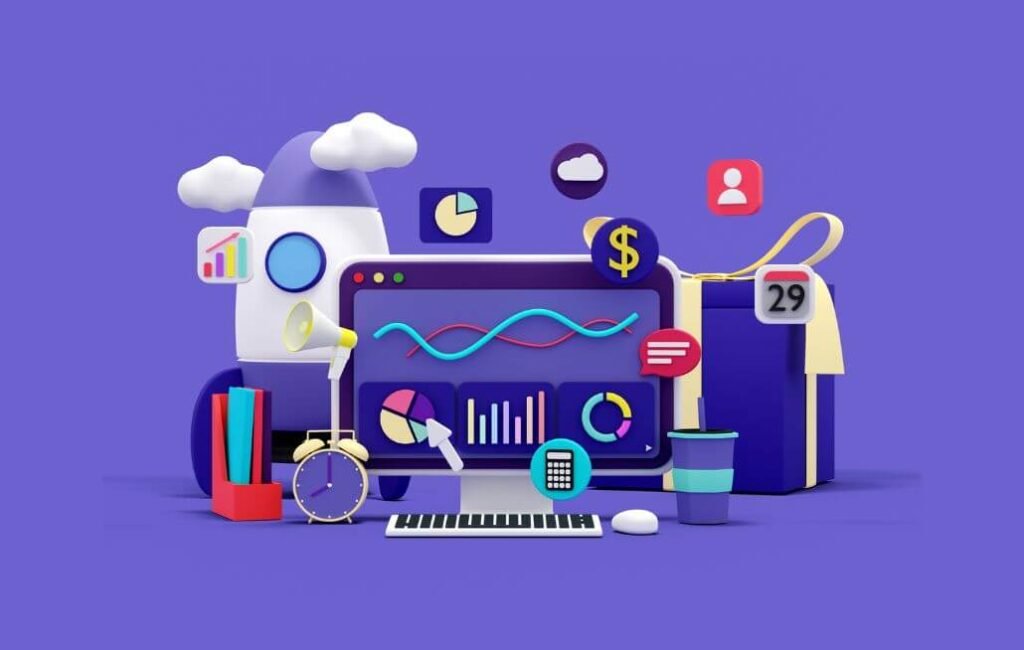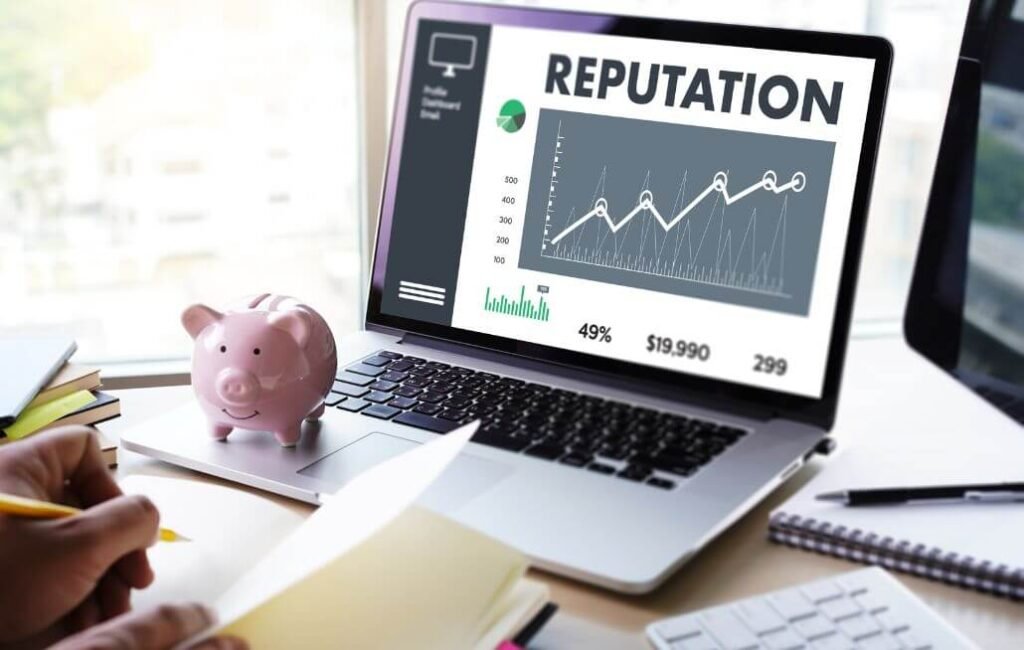Categories for Digital Marketing Glossary Terms
It’s super important to know the important digital marketing glossary, whether you’re managing online platforms yourself or entrusting them to someone else.
Why?
Because, understanding the important digital marketing glossary is essential because it serves as the foundation for effective communication and decision-making in the online sector. Moreover, this knowledge empowers you to navigate the digital landscape more confidently. It ensures that you can make informed choices, communicate effectively with stakeholders, and align strategies with industry standards, ultimately contributing to the success of your digital marketing efforts.
Additionally, your learning of digital marketing terms helps you use the tools and plugins on your website or social media properly.
What Is Digital Marketing Glossary?
The Digital Marketing Glossary is like a handy dictionary for all things related to digital marketing. It’s a go-to guide that breaks down the jargon and buzzwords, making it easier for anyone involved in online marketing to understand the terms and concepts.
From the basics like SEO (Search Engine Optimization) and SEM (Search Engine Marketing) to the more complex strategies, this glossary is there to demystify the language of digital marketing. It’s a tool that helps both seasoned professionals and newcomers alike stay in the loop, ensuring everyone can speak the same language in the fast-paced world of online promotion.
Here is a list of 10 catergories and 60 terms in digital marketing glossary that we’ll discuss in this article:
| Search Engine Marketing | SEO | PPC | SERP | SEM | Backlink |
| Canonical URL | Keyword Research | Schema Markup | Robots.txt | SERP Features | |
| Alt Text | Anchor text | Indexing | Nofollow | 301 Redirect | |
| Conversion and Analytic | Conversion Rate | CTA | Bounce Rate | KPI | Google Analytics |
| Social Media Marketing | Hashtag | Engagement | Influencer Marketing | Viral Marketing | Social Listening |
| Content and Blogging | Evergreen Content | CMS | Curation | Blogosphere | Infographic |
| User Experience and Interface | UX | UI | Wireframe | A/B Testing | Information Architecture |
| Paid Advertising | CPM | Impressions | Ad Retargeting | Ad Copy | Click-through Rate (CTR) |
| Digital Marketing Strategies | Funnel | Persona | Drip Campaign | Customer Journey | Segmentation |
| Geotargeting and Mobile Optimization | Geotargeting | Mobile Responsiveness | Location-Based Services | Mobile App Optimization | QR Code |
| Online Reputation Management | ORM | Brand Monitoring | Review Management | Crisis Management | Sentiment Analysis |
| Miscellaneous | Chatbot | Conversion Funnel | Landing Page | Influencer | Lead Magnet |
Let’s now understand the most important digital marketing glossary categories and their terms.
1. Search Engine Marketing (SEM)
It is a dynamic digital marketing strategy that focuses on enhancing a website’s visibility in search engine results through both paid and organic efforts. In simpler terms, it’s all about making sure your website shows up prominently when people search for relevant topics on search engines like Google or Bing.

SEM includes two key components: Search Engine Optimization (SEO), where you optimize your website to rank higher in organic search results, and Pay-Per-Click (PPC) advertising, where you bid on keywords to display ads at the top of search results and pay only when users click on them.
By combining these approaches, businesses aim to attract quality traffic, increase brand awareness, and drive conversions effectively in the competitive online landscape.
– SEO (Search Engine Optimization)
SEO is the practice of enhancing a website’s visibility on search engine results pages (SERPs) through various strategies and tactics. The primary goal is to optimize the website’s content, structure, and other elements to improve its ranking in organic (non-paid) search results, ultimately driving more traffic and increasing its online presence.
– PPC (Pay Per Click)
PPC, or Pay-Per-Click, is an online advertising model where advertisers pay a fee each time their ad is clicked. It’s a way of buying visits to a website rather than earning them organically.
– SERP (Search Engine Results Page)
SERP, or Search Engine Results Page, is like a digital billboard showcasing the results of a user’s search query on a search engine. It’s the page that unfolds after you hit “search,” displaying a list of web pages deemed most relevant to the entered keywords.
– SEM (Search Engine Marketing)
SEM, or Search Engine Marketing, is like crafting a spotlight for your digital presence. It involves strategies to enhance a website’s visibility on search engine results pages (SERPs) through both paid efforts (like Pay-Per-Click advertising) and organic efforts (like Search Engine Optimization). It’s the art of ensuring your website gets noticed in the bustling online marketplace.
– Backlink
A backlink is like a digital handshake between websites. It’s when one website includes a link that directs visitors to another site. These links are like recommendations in the vast online neighborhood, indicating that the linked-to content is trustworthy or valuable.
– Canonical URL
A canonical URL is like a wise librarian in the digital library, pointing to the preferred version of a web page when there are multiple variations of the same content. It’s a way of telling search engines which page should be considered the primary source to avoid confusion.
– Keyword Research
Keyword research is like gardening for your content strategy. It’s the thoughtful process of identifying the specific words and phrases users are likely to use when searching online. It helps you understand the language of your audience, allowing you to cultivate content that resonates with their needs.
Also read: How to Use SEMrush for Keyword Research
– Schema Markup
Schema Markup is like adding a touch of elegance to your website’s language. It’s a code language that helps search engines understand the context of your content better. Think of it as the subtle notes that bring out the richness in the story you’re telling online.
– Robots.txt
Robots.txt is like a polite “Keep Out” sign in the digital garden. It’s a text file placed on a website to guide search engine bots on which pages to crawl and which to ignore. It’s a courteous way of providing directions so that search engines navigate your site efficiently.
– SERP Features
SERP Features are like the special attractions in a bustling digital marketplace. They are the additional elements beyond the standard links that appear on a Search Engine Results Page (SERP). These features, such as featured snippets, knowledge panels, and local packs, add a layer of richness to the user’s search experience.
– Alt Text (Alternate Text)
Alt text is like a thoughtful description for the visual elements on your digital canvas. It’s a snippet of text added to images to convey their essence, ensuring that everyone, including those using screen readers, can understand the content. Think of it as a kind gesture, providing a verbal snapshot of what your images depict.
– Anchor text
Anchor text is like the compass rose in the digital seascape. It’s the clickable text in a hyperlink that guides users to another page or resource. More than just a signpost, anchor text sets the tone for the destination, providing a sneak peek into what lies ahead.
– Indexing
Indexing is like the delicate cataloging of digital treasures in the vast library of the internet. It’s a process where search engines, akin to diligent librarians, organize and store information from web pages, making it retrievable when users enter relevant queries. It’s the gentle archiving that ensures the digital library is a well-organized haven for seekers of knowledge.
– Nofollow
Nofollow is like a gentle request to search engines, asking them not to follow a particular hyperlink. It’s a snippet of code that, when added to a link, signals to search engines that they shouldn’t pass on any authority or ranking influence to the linked page. It’s a considerate gesture, indicating a conscious decision not to endorse the linked content.
– 301 Redirect
A 301 redirect is like a courteous guide in the digital landscape, indicating that a web page has permanently moved to a new location. It’s a way to ensure that users and search engines smoothly transition to the updated destination, maintaining a seamless and user-friendly experience.
2. Conversion and Analytic
The conversion and analytics parameters play pivotal roles in understanding and refining the success of a digital marketing strategy. Conversion, in its essence, is the moment when a visitor takes a desired action on a website, such as making a purchase, filling out a form, or signing up for a newsletter. It’s like the digital high-five, marking a positive engagement.
Analytics, on the other hand, involves the thoughtful analysis of data generated by user interactions with a website. Tools like Google Analytics provide valuable insights into visitor behavior, traffic sources, and other crucial metrics.

By delving into these analytics, marketers can decipher what’s working well, identify areas for improvement, and tailor their strategies to enhance user experience and overall performance. Together, conversion and analytics form a dynamic duo, guiding businesses towards more informed and effective digital marketing endeavors.
– Conversion Rate
Conversion rate is like the warm embrace of success in the digital world. It’s the percentage of visitors to a website who take a desired action, such as making a purchase, filling out a form, or subscribing. It’s a metric that reflects the effectiveness of a website in turning casual visitors into engaged participants.
– CTA (Call to Action)
A CTA is like a gentle invitation in the digital conversation. It’s a compelling prompt, often in the form of a button or text, that encourages users to take a specific action, like “Buy Now,” “Subscribe,” or “Learn More.” CTAs guide and encourage visitors to engage further, shaping their journey on a website.
– Bounce Rate
Bounce rate is like a gentle whisper in the digital breeze, indicating the percentage of visitors who navigate away from a website after viewing only one page. It’s a metric that softly reflects how captivating or engaging a webpage is, offering insights into the initial connection visitors feel with the content.
– KPI (Key Performance Indicator)
A KPI is like a gentle compass in the digital journey, serving as a measurable signpost that reflects the performance and success of specific goals. It’s a carefully chosen metric that guides businesses in understanding how well they’re progressing toward their objectives, offering valuable insights to inform strategic decisions.
– Google Analytics
Google Analytics is like a trusted companion in the digital realm, offering insightful glimpses into the performance of a website. It’s a robust tool provided by Google that helps businesses understand their online audience, track user behavior, and gain valuable data to refine their digital strategies. It’s the gentle storyteller revealing the narrative of user interactions on the web.
Also read: How to Create a Google Analytics 4 Account?
3. Social Media Marketing
Social Media Marketing is like a vibrant conversation at a global coffee shop, where businesses engage with their audience across various social platforms.

It’s the art of leveraging platforms like Instagram, Facebook, Twitter, and others to build brand awareness, foster relationships, and showcase products or services. Through clever content creation, sharing, and interaction, companies aim to become a welcomed part of the social media community.
It’s more than just posting; it’s about creating a digital camaraderie that goes beyond traditional marketing, inviting customers into a relatable and interactive online space.
– Hashtag
A hashtag is like a whimsical thread stitching together digital conversations. It’s a word or phrase preceded by the ‘#’ symbol, creating a clickable link that gathers posts on social media around a common theme. Think of it as a tiny magic wand that unites diverse voices under a shared banner, fostering connection and community.
– Engagement
Engagement is like the gentle dance of connection in the digital ballroom. It refers to the interactions, responses, and connections users have with online content. It’s the art of building a meaningful relationship, where likes, comments, and shares become the steps in the dance of digital camaraderie.
– Influencer Marketing
Influencer marketing is like a friendly collaboration in the digital symphony. It involves partnering with individuals who have a significant online presence and a loyal following to promote a product or service. It’s a shared journey where influencers, like trusted friends, introduce their audience to brands through authentic and relatable content.
– Viral Marketing
Viral marketing is like the sweet ripple of shared enthusiasm in the digital pond. It’s a strategy where content spreads rapidly and organically through online sharing, captivating audiences and creating a chain reaction of interest. It’s the infectious joy that travels from person to person in the vast digital community.
– Social Listening
Social listening is like a quiet stroll through the digital park, tuning in to the conversations happening across social media platforms. It involves monitoring and understanding what people are saying about a brand, product, or industry online. It’s the gentle art of eavesdropping on the collective heartbeat of the digital community.
Also read: How to Optimize Social Media Content?
4. Content and Blogging
Content and blogging are like the heartbeats of storytelling in the digital realm, giving a voice and personality to brands. It’s about resonating with your audience, providing them with something informative, entertaining, or inspiring that goes beyond a mere sales pitch. It’s the warmth in communication that transforms a brand from a faceless entity into a relatable friend in the digital space.
Content is the art of creating compelling and valuable information, whether it’s through blog posts, articles, videos, or social media. Blogging, on the other hand, is like having a continuous, open conversation with your audience. It’s the art of sharing stories, insights, and expertise in a more casual and personal manner.

Together, content and blogging weave a digital tapestry that brings brands and audiences closer in a meaningful and engaging way.
– Evergreen Content
Evergreen content is like the timeless melody in the world of blogging. It refers to articles or posts that remain relevant and valuable over an extended period. These pieces, much like perennial flowers, continue to bloom and attract readers long after they are published.
– CMS (Content Management System)
A Content Management System is the gentle conductor orchestrating the content symphony. It’s a tool or software that allows bloggers to create, edit, and manage digital content seamlessly. Picture it as a serene garden where bloggers can cultivate and nurture their ideas.
– Curation
Curation is like the art of arranging a digital bouquet. In the blogging realm, it involves handpicking and organizing content from various sources to present a thoughtful and cohesive narrative. It’s the curator’s touch that transforms a collection of ideas into a harmonious and engaging experience for readers.
– Blogosphere
The blogosphere is like a vast, interconnected galaxy of digital voices. It encompasses the collective community of blogs and bloggers, each star shining with unique perspectives. Navigating the blogosphere is akin to strolling through a cosmic garden, discovering a rich tapestry of thoughts and ideas.
– Infographic
An infographic is like a visual love letter in the blogging world. It’s a graphic representation of information, blending images and text to convey complex ideas in a digestible and visually appealing format. Think of it as the charming storyteller that paints vivid narratives with the strokes of creativity and data.
Also read: What is Long-Form Content and Why Do You Need it?
5. User Experience and Interface
User Experience (UX) is the essence of digital hospitality, focusing on the feelings and impressions users have when interacting with a website or application.

It’s about crafting a seamless and enjoyable journey, ensuring that every click is intuitive and every task is a breeze. UX is the empathetic side of design, anticipating user needs and creating an environment where technology feels like a helpful companion rather than a hurdle.
It’s the art of making the digital space a welcoming and delightful place for every visitor.
– UX (User Experience)
User Experience is like the gentle breeze that guides visitors through the digital landscape. It encompasses the overall impression users have while interacting with a website or application. It’s about creating a seamless, enjoyable, and meaningful journey, ensuring users feel welcomed and understood.
– UI (User Interface)
User Interface is like the artistic brushstroke that adorns the digital canvas. It refers to the visual elements and design components of a website or application that users interact with. UI aims to create an aesthetically pleasing and user-friendly environment, turning the digital experience into a delightful visual symphony.
– Wireframe
A wireframe is like the blueprint of a digital haven. It’s a skeletal representation of a webpage or application, outlining the basic structure and layout without delving into intricate details. It’s the soft sketch that helps designers and developers visualize and plan the arrangement of elements before crafting the full digital masterpiece.
– A/B Testing
A/B testing is like the gentle touch of curiosity in the realm of user experience. It involves comparing two versions (A and B) of a webpage or interface to understand which one performs better in terms of user engagement or conversion. It’s the methodical exploration that guides decisions, ensuring the digital space evolves based on user preferences.
– Information Architecture
Information Architecture is like the thoughtful organization of a digital library. It focuses on structuring and categorizing content in a way that makes sense to users. It’s the soft librarian arranging the digital shelves, ensuring that visitors can effortlessly navigate and find the information they seek in the vast online knowledge repository.
6. Paid Advertising
Paid advertising is like a supportive spotlight in the bustling marketplace, allowing businesses to shine and be noticed.
It involves the strategic promotion of products, services, or content through paid channels, such as social media, search engines, or display networks. In this digital ballet, companies bid for ad placements and pay when users interact, ensuring that their message reaches a targeted audience.

Paid advertising is a powerful storytelling tool, enabling brands to amplify their voice in a crowded digital landscape and connect with potential customers who might have otherwise missed the invitation.
– CPM (Cost Per Thousand Impression)
CPM, or Cost Per Thousand Impressions, is like the gentle tollgate on the digital highway. It represents the cost an advertiser pays for a thousand impressions or views of their ad. It’s the soft whisper of investment as brands aim to make their presence felt in the bustling online scenery.
– Impressions
Impressions are like the fluttering petals of a digital blossom. In the realm of advertising, an impression is counted each time an ad is viewed or displayed. It’s a gentle acknowledgment that the digital audience has cast a glance upon the advertised message, measuring the reach of a brand’s digital embrace.
– Ad Retargeting
Ad retargeting is like the friendly guide leading users back to familiar landscapes. It involves displaying targeted ads to users who have previously interacted with a website or product. It’s the thoughtful reminder, softly encouraging users to revisit and perhaps complete a journey they started in the digital realm.
– Ad Copy
Ad copy is like the poetic brushstroke in the canvas of advertising. It refers to the written content of an advertisement, carefully crafted to capture attention, evoke emotion, and convey a brand’s message. It’s the soft melody of words that seeks to resonate with the audience, turning a fleeting glance into a meaningful connection.
– CTR (Click-Through Rate)
Click-Through Rate, or CTR, is like the soft applause in the digital theater. It’s the percentage of users who click on an ad after seeing it, measuring the effectiveness of the ad in inspiring further engagement. It’s the gentle nod that acknowledges the dance of curiosity as users move from being spectators to active participants in the digital narrative.
Also read: Display Ads vs. Search Ads
7. Digital Marketing Strategies
Digital marketing strategies are like navigational constellations guiding businesses through the vast and ever-changing digital universe.

It involves the thoughtful planning, execution, and optimization of various online activities to achieve specific goals, whether it’s brand awareness, lead generation, or customer engagement.
Think of it as a carefully crafted roadmap, where businesses leverage a mix of channels such as social media, search engines, content marketing, and email to create a cohesive and impactful online presence.
– Funnel
A funnel is like a gentle guide in the digital garden, outlining the stages a potential customer traverses from awareness to conversion. It’s a strategic path that nurtures and directs individuals, offering a seamless journey through the blossoming landscape of brand engagement.
– Persona
A persona is like the empathetic sketch of an ideal audience member. In the realm of digital strategy, it represents a semi-fictional character embodying the traits, preferences, and behaviors of the target audience. It’s the soft portrait that helps marketers understand and connect with the human side of their digital community.
– Drip Campaign
A drip campaign is like a series of thoughtful notes in the inbox, gently nurturing relationships over time. It involves sending a sequence of automated messages to users, each delicately timed to provide valuable information or offers. It’s the slow dance of engagement, allowing brands to stay present in the digital conversation without overwhelming their audience.
– Customer Journey
The customer journey is like a gentle voyage through the digital constellations. It maps the various touchpoints and interactions a customer experiences with a brand, from initial awareness to post-purchase engagement. It’s the soft narrative that unfolds, capturing the essence of the customer’s evolving relationship with the brand.
– Segmentation
Segmentation is like the delicate sorting of digital blooms into meaningful bouquets. It involves dividing a target audience into distinct groups based on shared characteristics or behaviors. It’s the artful arrangement that allows marketers to tailor their strategies, ensuring that each segment receives a personalized and relevant digital bouquet.
8. Geotargeting and Mobile Optimization
Geotargeting is like extending a warm welcome to users based on their location in the digital neighborhood.
It involves tailoring marketing efforts to a specific geographic area, ensuring that content, ads, and promotions are relevant to the local audience. This personalized approach creates a sense of familiarity and connection, making users feel like the digital experience is crafted just for them.

Geotargeting is the online equivalent of knowing your community well, allowing businesses to offer location-specific deals, information, and experiences.
– Geotargeting
It is like the subtle dance of digital hugs tailored to specific locations. It involves delivering content or ads to users based on their geographic location. It’s the gentle whisper that ensures digital messages resonate with the unique flavors of each locality, creating a sense of warmth and relevance.
– Mobile Responsiveness
Mobile responsiveness is like the adaptive embrace in the digital world. It refers to the design and functionality of a website or content that smoothly adjusts to various screen sizes, particularly on mobile devices. It’s the tender gesture that ensures users experience the digital realm with ease, regardless of the device they hold.
– Location-Based Services
Location-based services are like the soft echoes of guidance in the digital landscape. These services leverage a user’s geographical position to offer personalized information or experiences. It’s the friendly compass that tailors the digital journey based on the specific coordinates, creating a sense of thoughtful companionship.
– Mobile App Optimization
Mobile app optimization is like the careful polishing of a digital gem. It involves refining the performance, user experience, and visibility of a mobile application to ensure it shines brightly in the app stores. It’s the tender care that transforms a digital tool into a delightful companion for users navigating the mobile universe.
– QR Code
A QR code is like a gentle bridge between the physical and digital realms. It’s a two-dimensional barcode that, when scanned, directs users to online content or information. It’s the soft invitation for users to seamlessly transition from the tangible world to the digital tapestry, creating a harmonious blend of the physical and virtual.
9. Online Reputation Management
Online Reputation Management is akin to tending to the garden of a brand’s digital presence, nurturing a positive image in the online landscape.

It involves monitoring, influencing, and managing how a business is perceived by its audience across various online platforms. Just like cultivating a good reputation in the physical world, Online Reputation Management strives to build trust, credibility, and goodwill in the digital realm.
It’s a delicate balance of addressing customer feedback, responding to reviews, and showcasing the positive aspects of a brand to shape a favorable perception.
– ORM (Online Reputation Management)
Online Reputation Management is like the gentle guardian of a brand’s digital essence. It involves the strategic curation and protection of a brand’s image across online platforms. Think of it as the soft caretaker, nurturing a positive and authentic online presence while addressing any whispers of concern.
– Brand Monitoring
Brand monitoring is like the watchful gaze over a digital garden. It involves keeping a close eye on online mentions, discussions, and sentiments related to a brand. It’s the gentle art of staying attuned to the digital breeze, ensuring that every note in the online symphony aligns harmoniously with the brand’s narrative.
– Review Management
Review management is like the delicate choreography of digital conversations. It involves responding to and engaging with user reviews, both positive and negative, to cultivate a constructive dialogue. It’s the art of turning reviews into meaningful exchanges, where each interaction becomes a step in the dance of building and maintaining trust.
– Crisis Management
Crisis management is like the calming presence in the face of a digital storm. It involves navigating and mitigating any online crises or reputation challenges that may arise. It’s the soft yet decisive touch that guides a brand through turbulent moments, ensuring that the digital narrative weathers the storm with resilience.
– Sentiment Analysis
Sentiment analysis is like the gentle deciphering of digital emotions. It involves assessing and understanding the sentiments expressed in online conversations about a brand. It’s the subtle tuning fork that gauges the emotional tones in the digital symphony, guiding strategic decisions with an understanding of the collective digital heartbeat.
10. Miscellaneous
Here’re some more important digital marketing glossary terms that you should know:
– Chatbot
A chatbot is like a friendly digital companion, providing instant and personalized interactions. It’s a conversational interface designed to engage users, answer queries, and guide them through digital experiences. Think of it as a virtual assistant, adding a touch of warmth to online conversations.
– Conversion Funnel
A conversion funnel is like a soft pathway guiding users from exploration to action. It represents the stages a visitor goes through, from initial awareness to making a desired action such as a purchase or sign-up. It’s the gentle flow that nurtures and invites users to take meaningful steps in the digital journey.
– Landing Page
A landing page is like a serene entryway into the digital world. It’s a standalone web page designed for a specific purpose, often to capture leads or promote a particular offer. Imagine it as the welcoming front door that focuses visitors’ attention on a singular message, providing a gentle invitation to explore further.
– Influencer
An influencer is like a digital storyteller with a trusted voice. It’s an individual who, through their online presence, has the ability to sway the opinions and behaviors of their audience. Think of them as friendly guides, sharing authentic narratives that resonate and gently influence the digital community.
Also read: how to become an influencer
– Lead Magnet
A lead magnet is like a thoughtful gift in the digital exchange. It’s valuable content or an offer provided to potential customers in exchange for their contact information. Picture it as the friendly gesture that entices visitors to share a bit about themselves, building a foundation for a more personalized and meaningful digital connection.
Benefits to Understand the Digital Marketing Glossary Terms
Understanding the Digital Marketing Glossary and its terms offers a bouquet of benefits, akin to discovering the hidden gems in a digital garden.
- Clarity in Communication
Learning these terms is like unlocking a secret language of the digital realm. It allows you to communicate more clearly and effectively with others in the field, fostering a sense of shared understanding and collaboration.
- Empowerment in Decision-Making
Knowledge of the glossary is like having a trusted compass in the vast landscape of digital strategies. It empowers you to make informed decisions, guiding your journey through the ever-evolving world of digital marketing.
- Strategic Insights
Delving into these terms is like peering into the intricate workings of a digital clock. It provides strategic insights, helping you comprehend the nuances of various digital marketing elements and tailor your approaches for maximum impact.
- Enhanced Collaboration
It’s like discovering the harmonious notes in a digital symphony. Understanding the glossary terms fosters smoother collaboration with colleagues and professionals, creating a shared language that facilitates teamwork and creativity.
- Adaptability to Trends
The glossary is like a trail map through the dynamic digital landscape. Knowing these terms enables you to stay agile and adapt to emerging trends, ensuring that your digital strategies remain relevant and effective.
- Improved Problem-Solving
It’s akin to having a toolbox for digital challenges. Familiarity with the glossary equips you with the tools needed to navigate and solve issues, turning potential obstacles into opportunities for growth.
- Cultivation of Digital Literacy
Exploring these terms is like nurturing the roots of digital literacy. It allows you to not only comprehend but also contribute meaningfully to discussions about digital marketing, creating a more inclusive and collaborative digital environment.
Final Thought
In the digital realm, this digital marketing glossary is your compass, decoding terms from SEO to user experience. It’s a trusted companion, clarifying jargon and guiding the dance of marketers and technology. Whether exploring geotargeting or orchestrating a PPC campaign, may it illuminate your path to success in online promotion.





